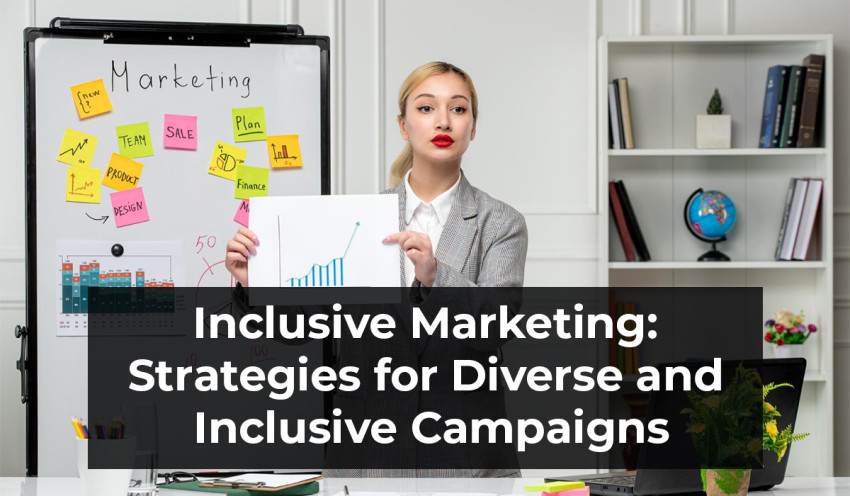
In today’s diverse and interconnected world, the importance of inclusive marketing cannot be overstated. Inclusive marketing goes beyond just reaching a broad audience; it’s about creating campaigns that resonate with people from all walks of life, regardless of their gender, race, ethnicity, age, abilities, sexual orientation, or socioeconomic status. Inclusive marketing not only reflects the values of a brand but also fosters a sense of belonging and understanding among consumers. In this blog post, we will explore the strategies for crafting diverse and inclusive marketing campaigns that not only embrace differences but celebrate them.
1. Understand Your Audience
The first step in creating an inclusive marketing campaign is understanding your audience. Conduct thorough research to gain insights into the demographics, preferences, and cultural nuances of your target audience. Recognizing the diversity within your customer base will enable you to tailor your campaigns effectively. Listen to their stories, understand their challenges, and celebrate their triumphs. By doing so, you can create campaigns that genuinely resonate with their experiences.
2. Embrace Diversity in Your Team
Having a diverse team with varied perspectives is invaluable in creating inclusive marketing campaigns. Ensure that your marketing team is reflective of the diversity you want to embrace in your campaigns. Different voices and viewpoints can lead to more creative ideas and strategies that appeal to a wider audience. Encourage open discussions and create a safe space where team members can share their experiences and insights.
3. Avoid Stereotypes and Misrepresentations
One of the fundamental aspects of inclusive marketing is avoiding stereotypes and misrepresentations. Stereotypical portrayals can alienate certain groups of people and reinforce harmful biases. Instead, focus on authentic storytelling that reflects the real experiences of diverse communities. Consider partnering with influencers and ambassadors from various backgrounds who can authentically represent your brand to their communities, opined a top digital marketer - Webomindapps.
4. Use Inclusive Language and Imagery
Language matters. Be mindful of the words and phrases you use in your marketing materials. Use inclusive language that is respectful and avoids assumptions about gender, race, or abilities. Similarly, use imagery that showcases diversity. Ensure that your visuals represent people from different ethnicities, ages, abilities, and gender identities. By doing so, you send a powerful message of inclusivity and acceptance.
5. Educate and Raise Awareness
Inclusive marketing is not just about selling products or services; it’s also about raising awareness and educating your audience. Use your platform to advocate for social causes and promote inclusivity. Address important issues such as racial inequality, gender discrimination, LGBTQ+ rights, and accessibility. By aligning your brand with social causes, you demonstrate your commitment to a more inclusive society.
6. Be Mindful of Accessibility
Ensure that your marketing materials are accessible to everyone, including individuals with disabilities. This includes having a website that is compatible with screen readers, providing transcripts for videos, and using high-contrast and large fonts in your visuals. Making your content accessible not only widens your audience but also demonstrates your commitment to inclusivity.
7. Seek Feedback and Iterate
Inclusive marketing is an ongoing journey that requires continuous learning and adaptation. Seek feedback from your audience and listen to their responses. Be open to criticism and use it as an opportunity to learn and grow. Iterate on your campaigns based on the feedback received, ensuring that you are constantly improving your approach to inclusivity.
Conclusion: Celebrating Diversity, Fostering Inclusivity
Inclusive marketing is not just a trend; it's a fundamental shift in how brands connect with their audience. By embracing diversity, being mindful of language and imagery, and advocating for social causes, brands can create campaigns that resonate on a deeper level. Inclusive marketing is not just about selling products; it's about fostering a sense of belonging, understanding, and acceptance.
As marketers, we have the power to shape narratives and influence perceptions. Let’s use that power responsibly, celebrating the beautiful tapestry of humanity and promoting a world where everyone feels seen, heard, and valued. Inclusive marketing is not just good for business; it’s good for society, fostering empathy, understanding, and unity among people from all walks of life. Let’s embrace the diversity that makes us unique and create marketing campaigns that truly make a difference in the world.



